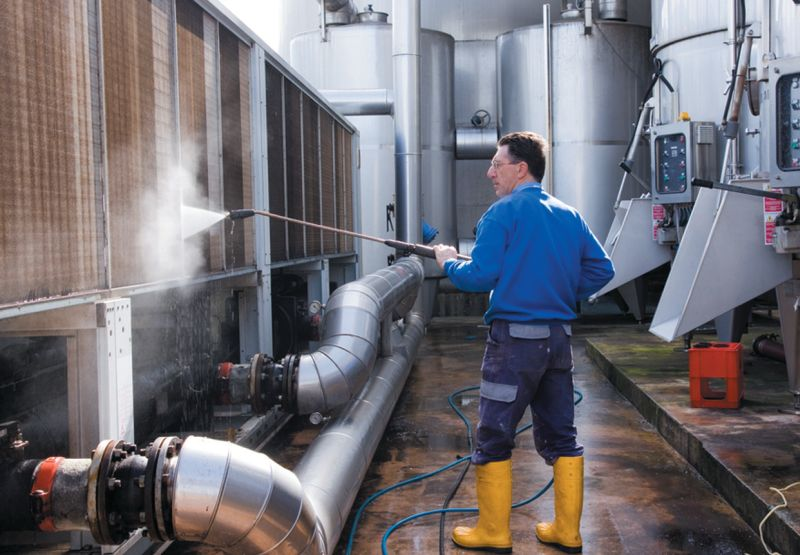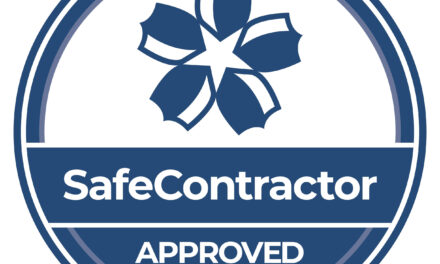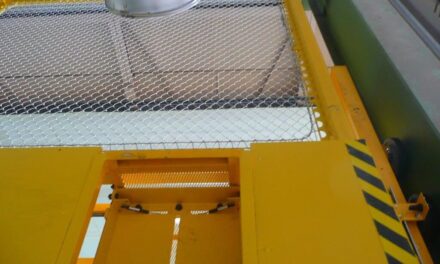 Sourcing equipment that reacts well to a regular high-pressure washdown can be challenging because even the smallest sealing flaws will result in water ingress into machinery. However this can be addressed to a degree by specifying machinery rated IP69K says Paul Laidler, business director for machinery safety at TÜV SÜD Product Service
Sourcing equipment that reacts well to a regular high-pressure washdown can be challenging because even the smallest sealing flaws will result in water ingress into machinery. However this can be addressed to a degree by specifying machinery rated IP69K says Paul Laidler, business director for machinery safety at TÜV SÜD Product Service
As well as offering enhanced cleaning efficiency, the high-pressure washdown cleaning technique also reduces water and detergent usage, reducing costs and minimising the environmental impact.
While it has wide applications, particularly in the food, beverage and pharmaceutical sectors, sourcing equipment that reacts well to a regular high-pressure washdown has its challenges. However, this can be addressed by using the ingress protection (IP) rating system defined in IEC 60529, with category IP69K specifically relating to high-pressure washdown.
Although the IP69K rating was originally developed for equipment used on road vehicles and is only defined in the German DIN 40 050 version of the standard, it has now been adopted by many suppliers of enclosures, sensors and other machinery intended for use in washdown areas.
When using the IP69K rating the equipment is tested with a spray nozzle that is fed with water at 80°C at a pressure of 80 to 100bar and a flow rate of 14 to 16 l/min. The nozzle is positioned 50 to 100mm from the equipment at angles of 0, 40, 60 and 90 degrees for 30 seconds each. The equipment is mounted on a turntable that rotates at 5rpm. At the end of the test, there must have been no ingress of water.
Covering post-manufacture changes
However, it is important to remember that simply specifying an IP69K rated machine does not allow for the fitting of any post-manufacture additions such as push-buttons and indicator lights. Neither does it allow for any necessary drilling into the enclosure that is required for the addition of power cables once the machine is on site. This is a common mistake made by purchasers of machinery and all of these can impact the machine’s integrity, creating potential leakage points.
It is therefore important to maintain the ingress protection rating during assembly and installation in order to ensure problem-free operation in washdown areas. This could include sealing push-buttons and indicator lamps and using IP69K glands for cable entries.
When selecting equipment for use in washdown areas there are other aspects that must also be taken into account, aside from the key factor of water ingress protection. This includes the material used in the fabrication of the equipment.
For example, it is not unusual for food manufacturing companies to carry out washdown procedures as often as 12 times a day, regularly exposing machinery not only to the water jets themselves, but also to the detergent used in the cleaning process. While many materials cannot withstand this regular exposure, stainless steel can. For this reason, grade 316 stainless steel is usually specified for equipment that will be used in washdown as it has better corrosion resistance than other commonly available grades.
The surface finish of the equipment can also make a significance difference to cleaning effectiveness. For example, while the ordinary surface finishes of stainless steel and other materials look smooth to the naked eye, examination under a microscope will reveal that they are quite rough with peaks and troughs that can harbour bacteria and other microscopic contaminants, making these items very difficult to remove.
A solution has recently been developed for this problem in the form of nanocoatings. These typically take the form of a clear liquid containing specially developed nanoparticles that incorporate both adhesion and anti-adhesion components. The result is a tough abrasion-resistant coating with an ultra-smooth surface that is highly resistant to the build up of soiling and contaminants, making it very easy to clean using high-pressure washdown techniques. Nanocoatings are exceptionally versatile, and can be applied to almost any type of equipment, including enclosures, guards and interlocks.
Since the whole point of washdown is to ensure cleanliness, another crucial factor that must be considered is how easy the equipment is to clean. There is of course little point in specifying equipment that has dirt traps and inaccessible areas that are hard to cleanse effectively, despite the most determined jetting.
Successfully specifying equipment that will be used in washdown areas, and continually exposed to water and detergents, can be a challenging and complex undertaking. A significant investment of time is therefore required for careful planning across the entire supply chain, from initial specification and design of factory equipment to its sourcing and installation. This process should include subsequent verification after final installation to ensure that it meets all relevant standards and regulations. However, this initial effort will pay significant long-term dividends in a high-pressure washdown factory environment.
TÜV SÜD Product Service
T: 01489 558100




